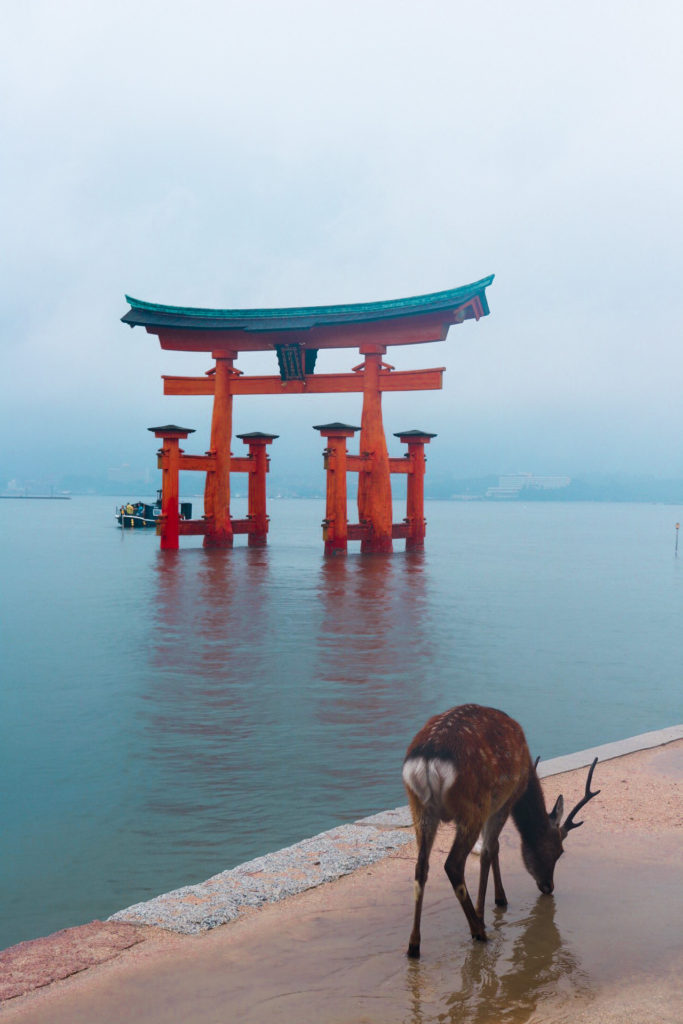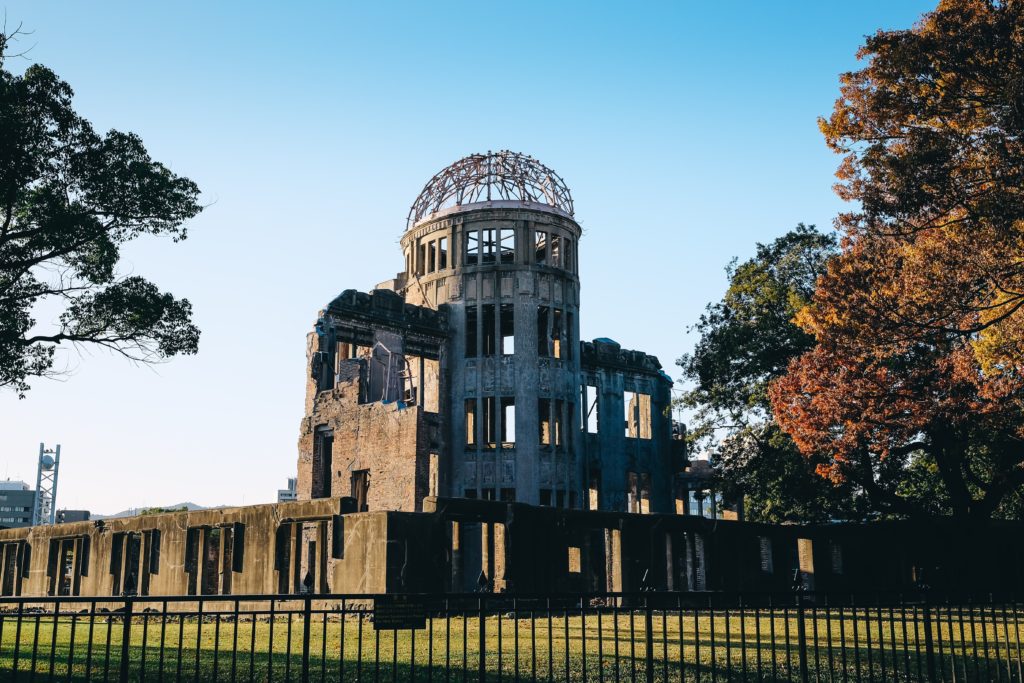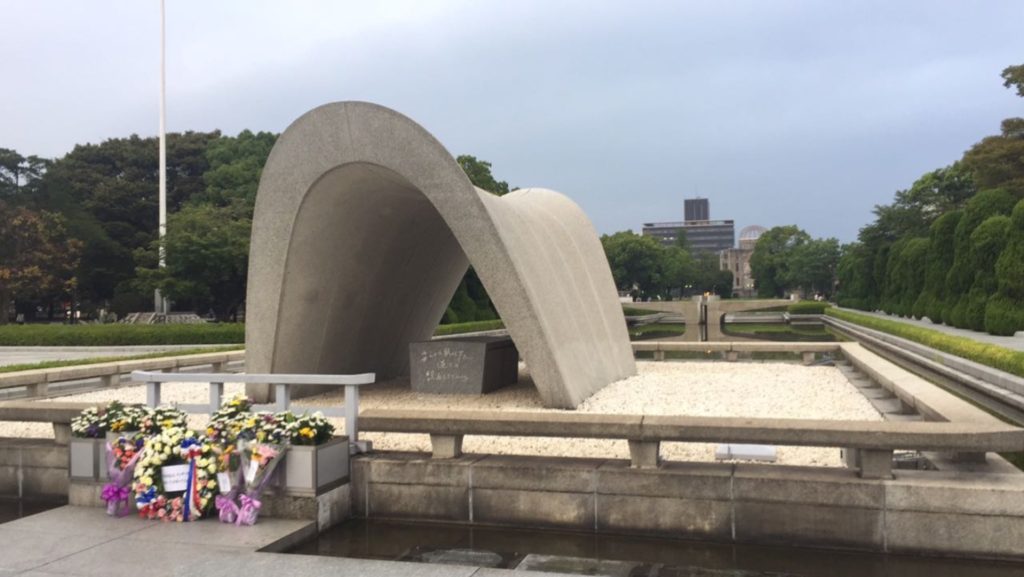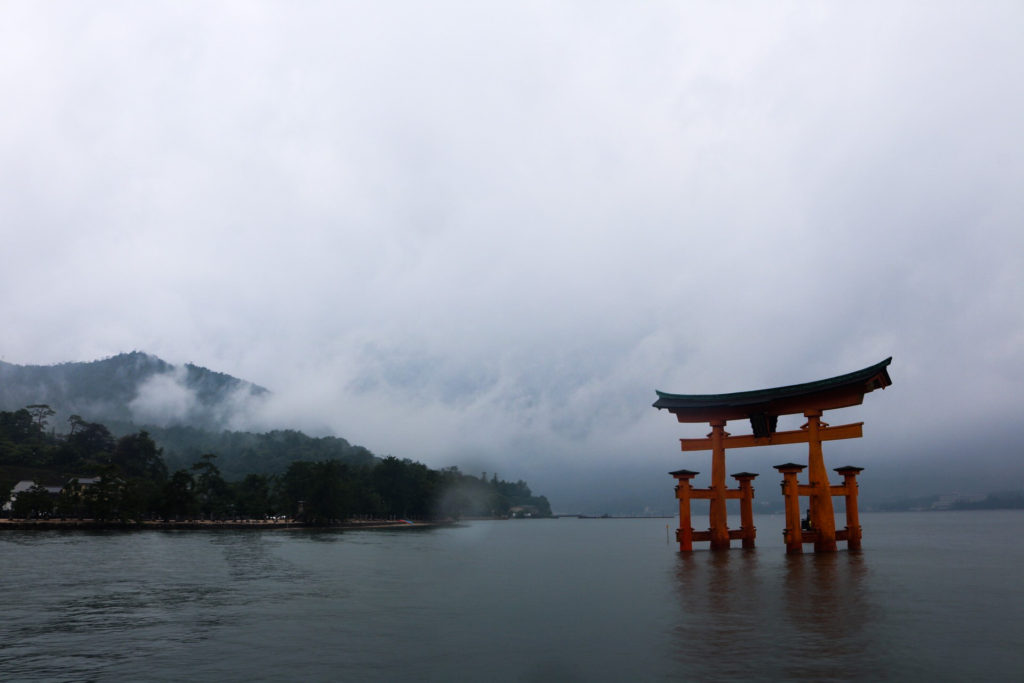Best Tourist Attractions To Visit In Hiroshima Japan
Traveling to Hiroshima is a journey that takes you through time, emotions, and the human spirit. The city of Hiroshima, forever etched in history by the atomic bomb that fell on August 6, 1945, is now a vibrant symbol of resilience, hope, and peace. In this comprehensive travel guide, we will delve deep into the heart of Hiroshima, exploring its history, culture, cuisine, and the enduring message it carries. This blog on the best tourist attractions to visit in Hiroshima Japan will hopefully give you all the information on the best things to do in Hiroshima city if you are planning on visiting. Whether it is a day trip, or for longer, it is a great place to visit and understand the rich history of Hiroshima whilst also enjoying the local cuisine and trying other top things in this city.

Table of Contents
- Hiroshima: A City Reborn
- A Brief Overview of Hiroshima’s History
- The Atomic Bombing and its Aftermath
- The Transformation into a City of Peace
- Getting to Hiroshima
- Transportation Options
- Travel Tips
- Exploring the City
- Hiroshima Peace Memorial Park and the Atomic Bomb Dome
- Hiroshima Peace Memorial Museum
- Children’s Peace Monument
- Shukkeien Garden
- Hiroshima Castle
- Hiroshima Orizuru Tower
- Culinary Adventures
- Hiroshima-style Okonomiyaki
- Hiroshima-style Tsukemen
- Hiroshima-style Oysters
- Hiroshima-style Sake
- Vegan and Vegetarian Options
- Day Trips from Hiroshima
- Miyajima Island
- Iwakuni: The Kintai Bridge and Iwakuni Castle
- Onomichi: The Shimanami Kaido
- Immersing in Culture
- Hiroshima’s Arts and Crafts
- Hiroshima’s Festivals
- Hiroshima’s Nightlife
- Practical Tips for Your Hiroshima Journey
- Best Times to Visit
- Accommodation Options
- Budgeting for Your Trip
- Language and Communication
- Safety and Etiquette
- Conclusion: Embracing Hiroshima’s Legacy of Peace
1. Hiroshima: A City Reborn
A Brief Overview of Hiroshima’s History
Hiroshima, founded in the late 16th century, was once a thriving castle town and a vital center of culture and commerce in western Japan. However, its fate took a tragic turn during World War II when it became the target of the world’s first atomic bomb attack.
The Atomic Bombing and its Aftermath
On August 6, 1945, the United States dropped an atomic bomb named “Little Boy” on Hiroshima, instantly killing tens of thousands of people and causing unimaginable suffering. The city was almost entirely destroyed, and the survivors faced long-term health issues due to radiation exposure.
The Transformation into a City of Peace
In the wake of this devastation, Hiroshima emerged as a symbol of hope and peace. The Hiroshima Peace Memorial Park, centered around the hauntingly preserved Atomic Bomb Dome, serves as a reminder of the destructive power of nuclear weapons and a plea for a world free from such horrors.
2. Getting to Hiroshima
Hiroshima is easily accessible via several transportation options:
- By Air: Hiroshima Airport (HIJ) connects the city to major Japanese cities, including Tokyo, Osaka, and Fukuoka. From the airport, you can reach Hiroshima’s city center by shuttle bus or taxi.
- By Shinkansen (Bullet Train): The Shinkansen is a convenient and efficient way to travel to Hiroshima from major cities like Tokyo and Osaka. The JR Sanyo Shinkansen connects Hiroshima to these cities in just a few hours.
- By Bus: Long-distance buses also offer access to Hiroshima from various parts of Japan. They are usually more economical but take longer than the Shinkansen.
Travel Tips:
- Consider purchasing a Japan Rail Pass if you plan to explore multiple cities via the Shinkansen.
- Local transportation within Hiroshima, including trams and buses, is efficient and well-connected.
- Hiroshima is a walkable city, so bring comfortable shoes for exploring on foot.
3. Exploring the City
Hiroshima is a city with a rich tapestry of historical and cultural attractions. Here are some must-visit places:
Hiroshima Peace Memorial Park and the Atomic Bomb Dome
The heart of Hiroshima’s historical significance, the Hiroshima Peace Memorial Park, is a beautifully landscaped area dedicated to promoting peace. The park houses several monuments, including the Peace Bell, the Flame of Peace, and the Memorial Cenotaph. At its center stands the Atomic Bomb Dome, a hauntingly preserved building that withstood the blast and is now a UNESCO World Heritage Site.

Hiroshima Peace Memorial Museum
The Hiroshima Peace Memorial Park, located near the Atomic Bomb Dome, is a serene and contemplative space that embodies the city’s commitment to peace and reconciliation. Within the peace park, you’ll find the Peace Memorial Museum, which provides a comprehensive overview of the events leading up to the atomic bombing and its aftermath. The museum’s exhibits include personal stories, artifacts, and powerful testimonies, all of which help visitors understand the impact of nuclear warfare on individuals and society.

One of the most poignant features of this pleasant green park is the Children’s Peace Monument. This monument was inspired by Sadako Sasaki, a young girl who developed leukemia as a result of radiation exposure from the bomb. Sadako believed that if she folded one thousand paper cranes, a symbol of longevity and happiness in Japanese culture, she would be granted a wish for her recovery. Tragically, she passed away before reaching her goal, but her story inspired the world to fold cranes as a symbol of peace. Today, the monument is adorned with thousands of colourful origami cranes sent from people around the globe and is still a popular place to visit in Hiroshima.
Children’s Peace Monument
Inspired by Sadako Sasaki, a young girl who developed leukemia from radiation exposure and believed in the healing power of folding 1,000 paper cranes, this monument is adorned with thousands of colorful origami cranes from around the world. It stands as a symbol of hope, peace, and the importance of ending nuclear weapons.
Shukkeien Garden
Escape the city’s hustle and bustle in this beautiful traditional Japanese garden. Shukkeien, which means “shrunken-scenery garden,” features ponds, bridges, tea houses, and meticulously landscaped greenery. It’s especially enchanting during cherry blossom season.
Hiroshima Castle
Though a reconstruction of the original 16th-century castle, Hiroshima Castle provides visitors with a glimpse into Japan’s feudal past. The castle grounds are stunning, particularly during cherry blossom season when the surrounding moats burst into a sea of pink.
Hiroshima Orizuru Tower
For a panoramic view of the city, head to the Hiroshima Orizuru Tower. It offers a breathtaking lookout, especially at sunset. The tower also features interactive exhibits about Hiroshima’s history and peace efforts.
4. Culinary Adventures
Hiroshima is a paradise for food lovers, with a unique culinary heritage that includes:
Hiroshima-style Okonomiyaki
Okonomiyaki is a savory pancake-like dish, but Hiroshima’s version is distinct. Layers of ingredients, including cabbage, noodles, pork, and more, are stacked on a hot griddle, creating a delicious and filling meal. Try it at Okonomi-mura, a multi-story building housing various okonomiyaki restaurants.
Hiroshima-style Tsukemen
Tsukemen is a dish consisting of cold noodles served with a separate bowl of hot dipping broth. Hiroshima’s twist on this dish includes local ingredients like oysters and soy sauce-based broth, creating a unique and satisfying flavor.
Hiroshima-style Oysters
Known for its fresh seafood, Hiroshima is a haven for oyster lovers. Try oysters grilled, fried, or as a topping for sushi. You won’t be disappointed.
Hiroshima-style Sake
Hiroshima produces some of Japan’s finest sake. Visit a local brewery to sample the different varieties and learn about the sake-making process.
Vegan and Vegetarian Options
While Hiroshima’s cuisine is known for its seafood and meat dishes, the city offers an increasing number of vegan and vegetarian options. Look for restaurants that cater to these dietary preferences, such as tofu-based dishes and vegetable tempura.
5. Day Trips from Hiroshima
While Hiroshima has much to offer, consider taking day trips to nearby destinations to enrich your travel experience:
Miyajima Island
Miyajima Island, also known as Itsukushima Island, is a picturesque and culturally rich destination located in Hiroshima Prefecture, Japan. It is renowned for its stunning natural beauty, iconic red torii gate (Itsukushima Shrine’s O-torii Gate), and a harmonious blend of history, spirituality, and scenic landscapes. Here’s a closer look at this enchanting island:

Itsukushima Shrine:
- Itsukushima Shrine, a UNESCO World Heritage Site, is the most famous attraction on the island. What makes it truly unique is its placement. The shrine appears to float on water during high tide, creating a mesmerizing view.
- The vibrant red O-torii Gate, standing in the sea, is one of Japan’s most iconic symbols and a popular spot for photographs.
- The shrine’s architecture is an exquisite example of Shinden-zukuri, a traditional Japanese architectural style characterized by elegant simplicity.
Natural Beauty:
- Miyajima is known for its lush greenery and scenic landscapes. The island is covered in forests and is home to native deer that freely roam the streets, adding to the island’s charm.
- Mount Misen, the island’s highest peak, offers breathtaking panoramic views of the Seto Inland Sea and the surrounding islands. You can hike to the summit, take a ropeway, or use a combination of both to reach the top.
- Momijidani Park is famous for its vibrant autumn foliage, making it a prime spot for viewing the changing seasons.
Cultural Attractions:
- The island is dotted with temples, shrines, and historical sites, such as Daisho-in Temple, where you’ll find a variety of Buddhist statues and prayer wheels.
- There’s a centuries-old tradition of oyster farming on Miyajima, and you can enjoy fresh, locally harvested oysters at many restaurants on the island.
Festivals:
- The island hosts various festivals throughout the year, including the Itsukushima Shrine Festival, which features traditional performances, processions, and fireworks.
- The spectacular Toro Nagashi, or lantern-floating ceremony, is held in the evening during the summer months, creating a magical atmosphere on the island.
Food and Cuisine:
- Miyajima offers a variety of delectable seafood dishes, including grilled oysters, conger eel, and anago meshi (grilled eel over rice).
- Try momiji manju, a local sweet treat shaped like maple leaves and filled with various fillings like red bean paste, custard, or chocolate.
Getting There:
- Miyajima Island is accessible from Hiroshima by a short ferry ride. The ferry terminal is conveniently located near Hiroshima’s Peace Memorial Park.
- The ferry ride itself offers beautiful views of the Seto Inland Sea and the surrounding islands.
Iwakuni: The Kintai Bridge and Iwakuni Castle
Iwakuni, about an hour’s train ride from Hiroshima, boasts the impressive Kintai Bridge, a historical wooden arch bridge. Visit Iwakuni Castle for panoramic views of the city and surrounding countryside.
Onomichi: The Shimanami Kaido
Onomichi, a coastal town about an hour from Hiroshima by train, is the gateway to the Shimanami Kaido, a cycling route that takes you across picturesque islands and bridges connecting the mainland to Shikoku.
6. Immersing in Culture
Apart from its historical sites, Hiroshima offers opportunities to engage with its vibrant culture:
Hiroshima’s Arts and Crafts
Explore Hiroshima’s thriving arts and crafts scene by visiting galleries, pottery studios, and shops selling locally made goods. Consider bringing home a unique piece of Hiroshima’s craftsmanship.
Hiroshima’s Festivals
If your travel dates align, experience Hiroshima’s vibrant festival culture. Events like the Hiroshima Flower Festival and the Hiroshima Peace Memorial Ceremony offer a chance to connect with locals and celebrate life.
Hiroshima’s Nightlife
Hiroshima has a lively nightlife scene, with bars, clubs, and karaoke joints scattered throughout the city. Sample some local sake or enjoy the company of fellow travelers and locals alike.
7. Practical Tips for Your Hiroshima Journey
Before embarking on your trip to Hiroshima, keep these practical considerations in mind:
Best Times to Visit
Spring (April to May) and autumn (September to November) are ideal for visiting Hiroshima, with mild weather and cherry blossoms or colorful foliage, depending on the season.
Accommodation Options
Hiroshima offers a range of accommodation options, from luxury hotels to budget-friendly hostels and traditional ryokans. Book in advance, especially during peak travel seasons.
Budgeting for Your Trip
Japan, while offering incredible experiences, can be expensive. Plan your budget accordingly, considering accommodation, food, transportation, and activities.
Language and Communication
While English is not widely spoken in Hiroshima, most signs are bilingual. It’s helpful to learn a few basic Japanese phrases and use translation apps for smoother communication.
Safety and Etiquette
Hiroshima is a safe city, but it’s essential to respect local customs and etiquette. Be polite, observe the rules, and dispose of trash properly.
8. Conclusion: Embracing Hiroshima’s Legacy of Peace
A trip to Hiroshima is more than just sightseeing; it’s a profound and emotional experience that will stay with you long after you’ve left. As you explore the city’s history, culture, and cuisine, you’ll encounter a story of resilience, hope, and the unwavering commitment to peace.
Hiroshima’s transformation from a city devastated by nuclear warfare to a beacon of reconciliation and harmony is a testament to the indomitable spirit of its people. Your journey to Hiroshima will not only broaden your horizons but also inspire you to champion the cause of peace in your own life.
So, pack your bags, immerse yourself in Hiroshima’s past, and embrace the future with a heart full of hope and a commitment to a world without war. Hiroshima awaits you, ready to share its profound legacy of peace.
If you enjoyed reading this post, then check out my other blogs at https://www.mymemoriesabroad.com/category/blog/ or head to my Pinterest profile to have a look at travel photos which will hopefully inspire you to book your holiday to remember at https://www.pinterest.co.uk/mymemoriesabroad/.
